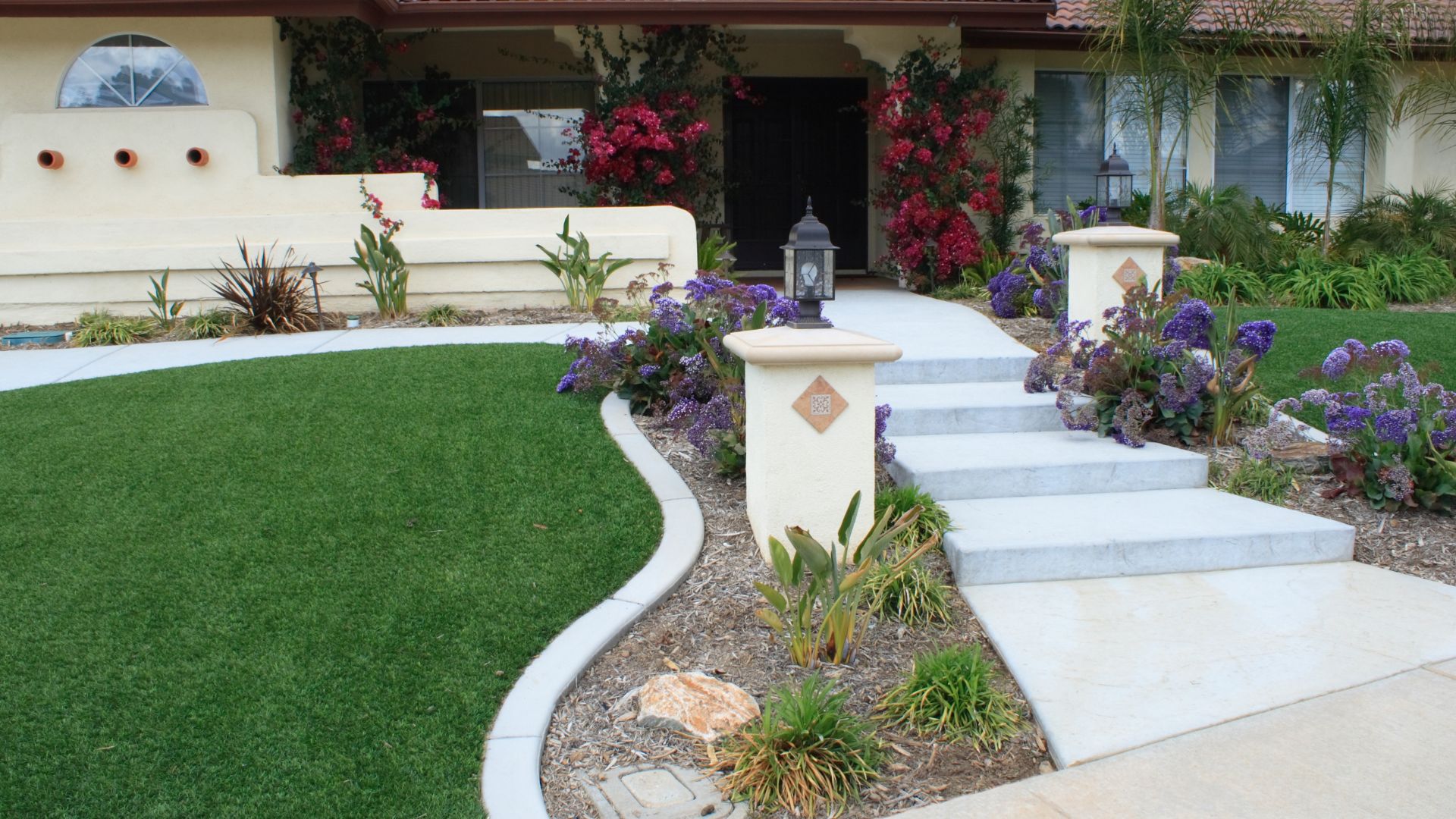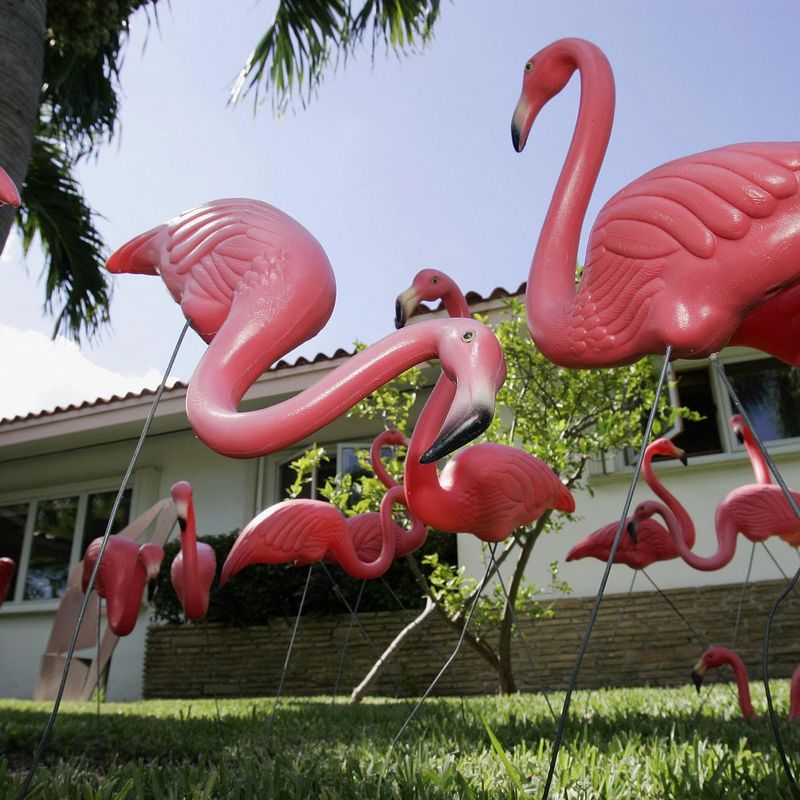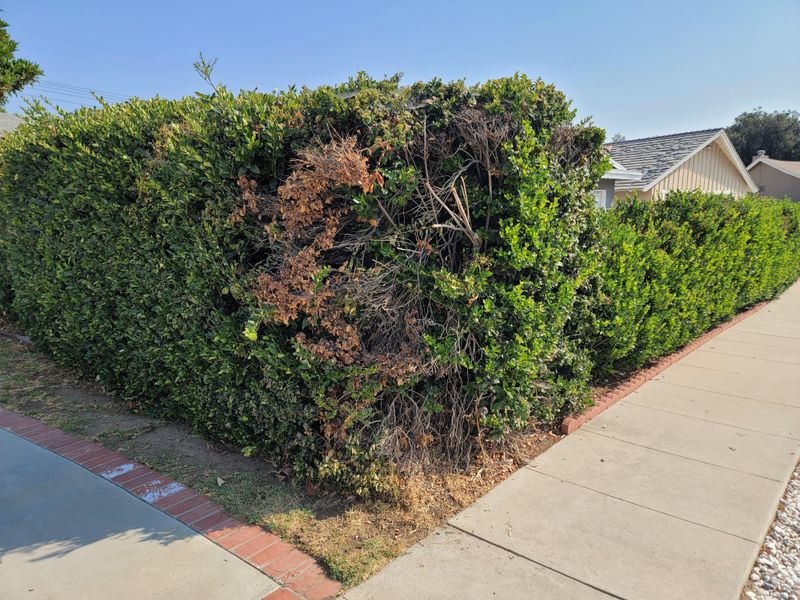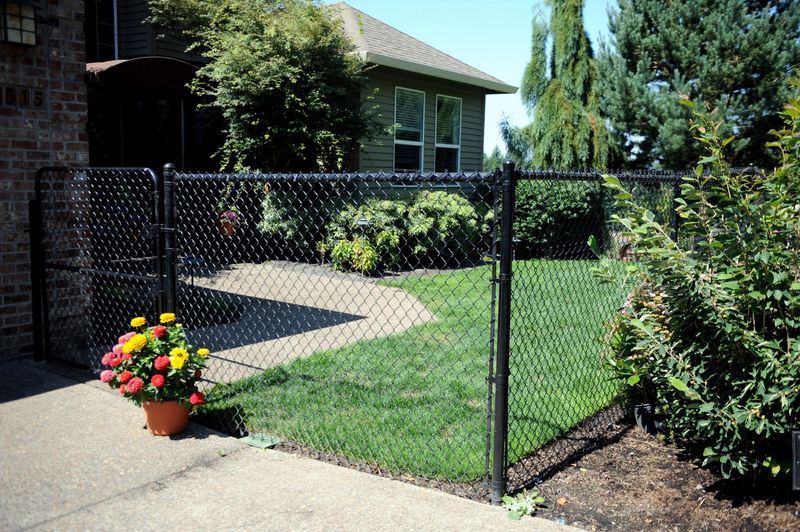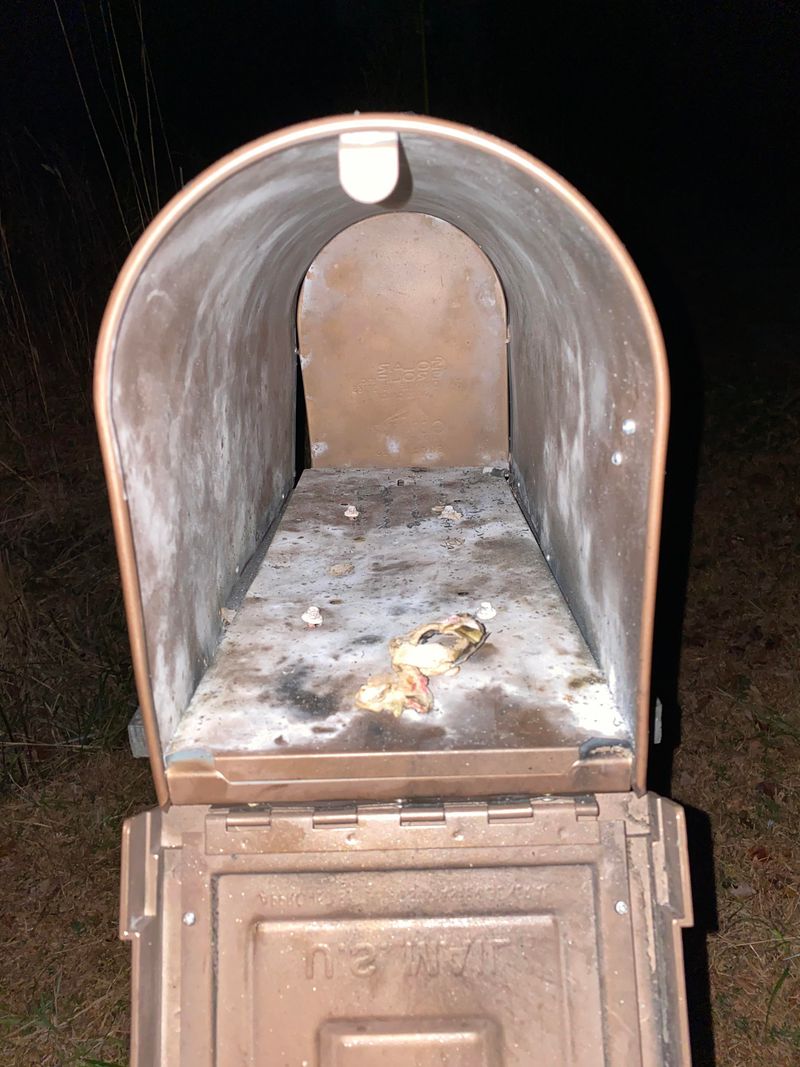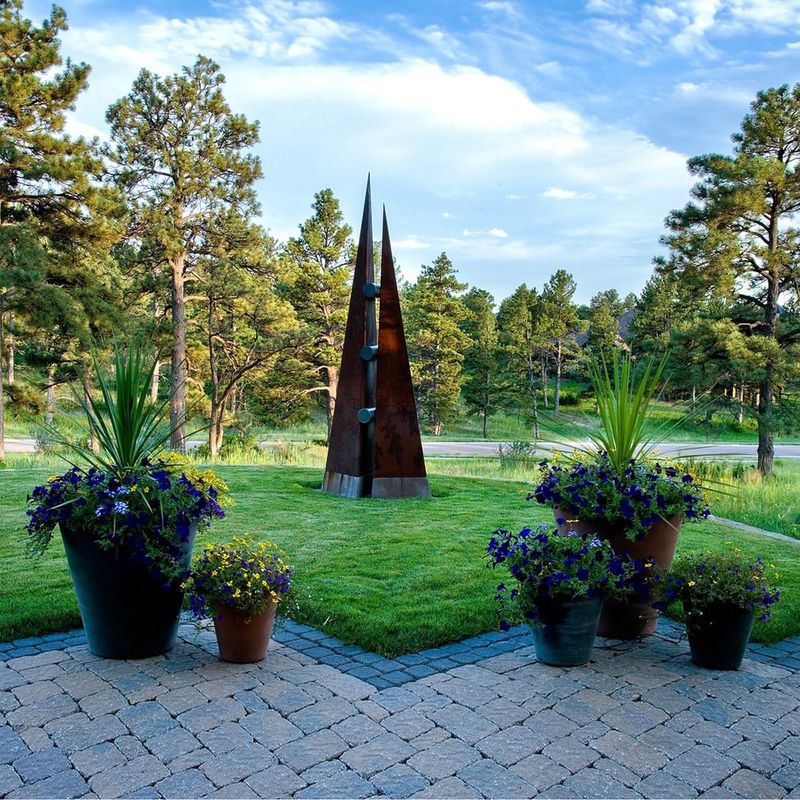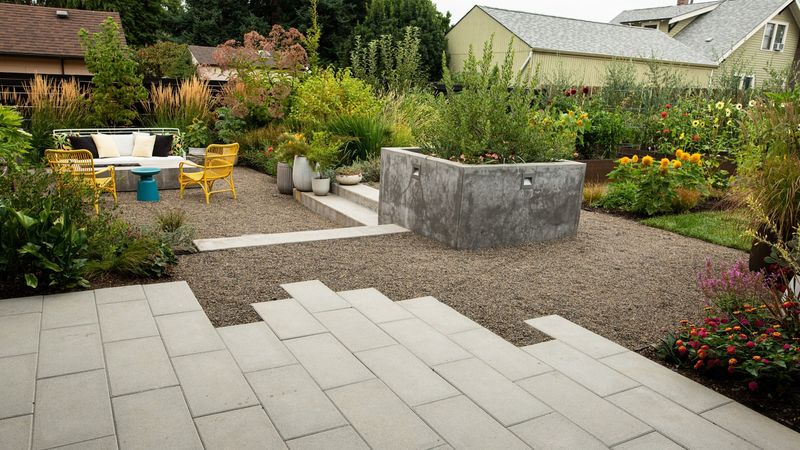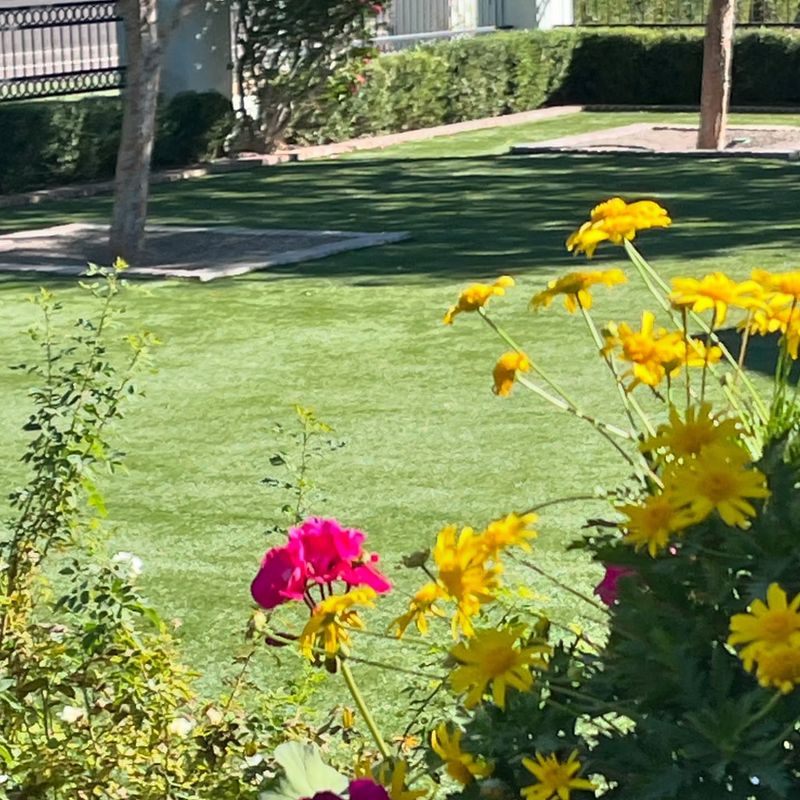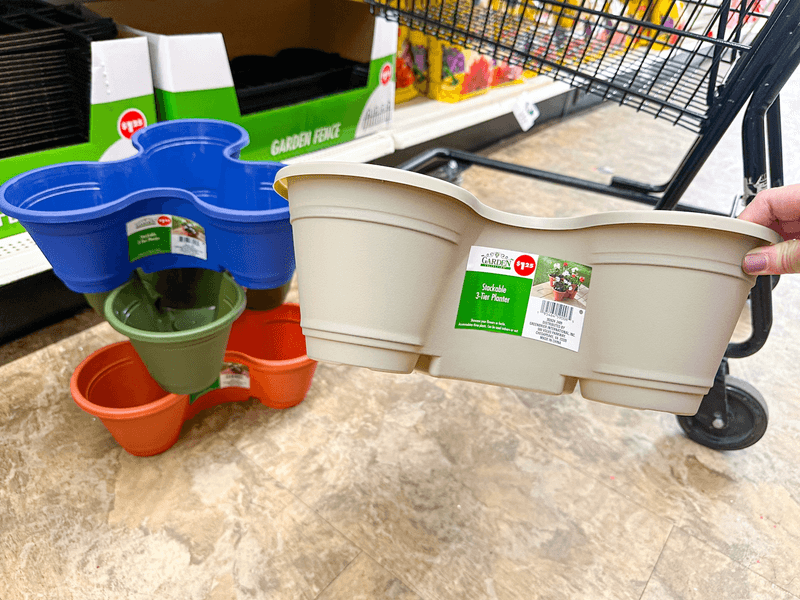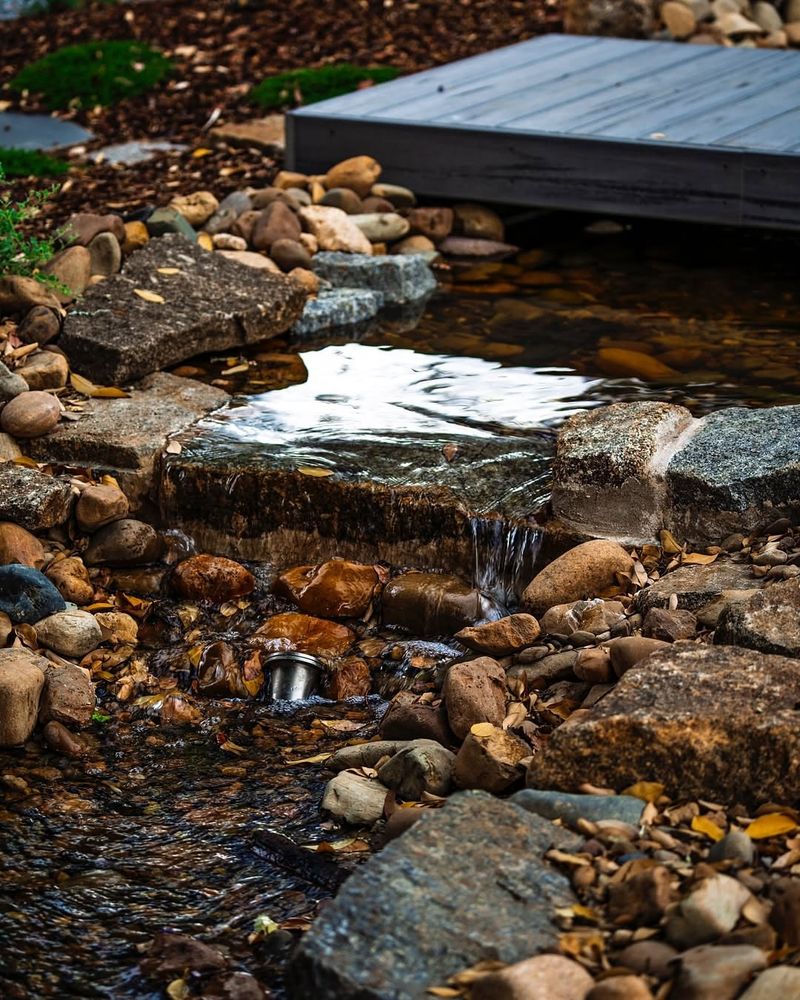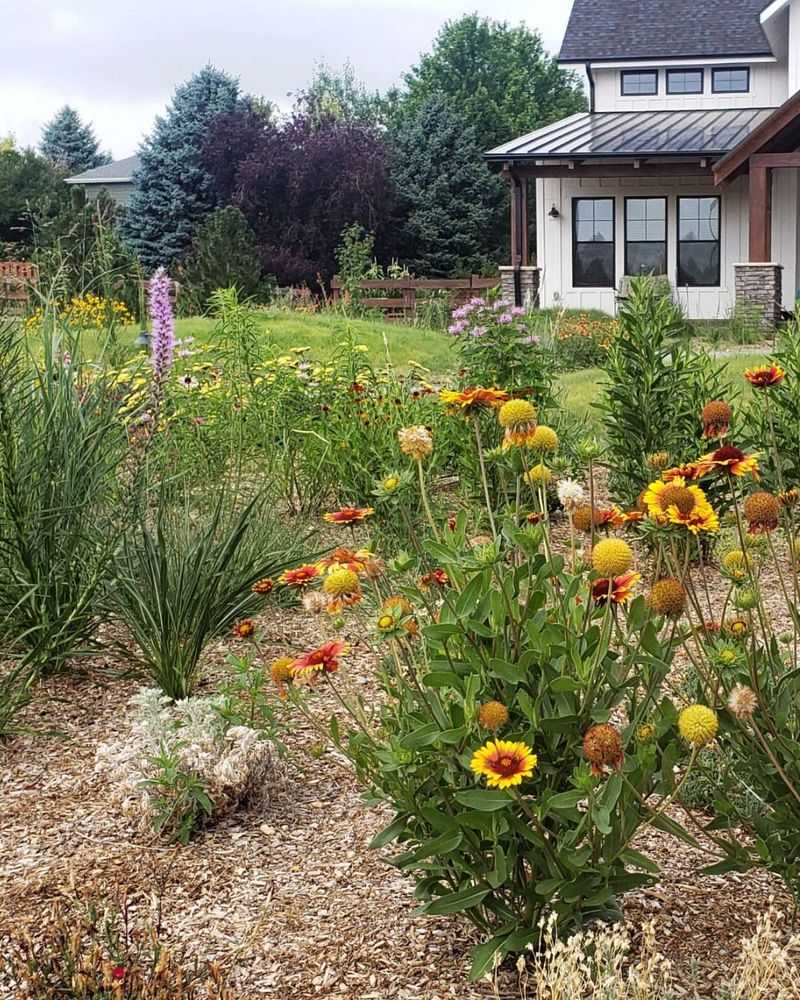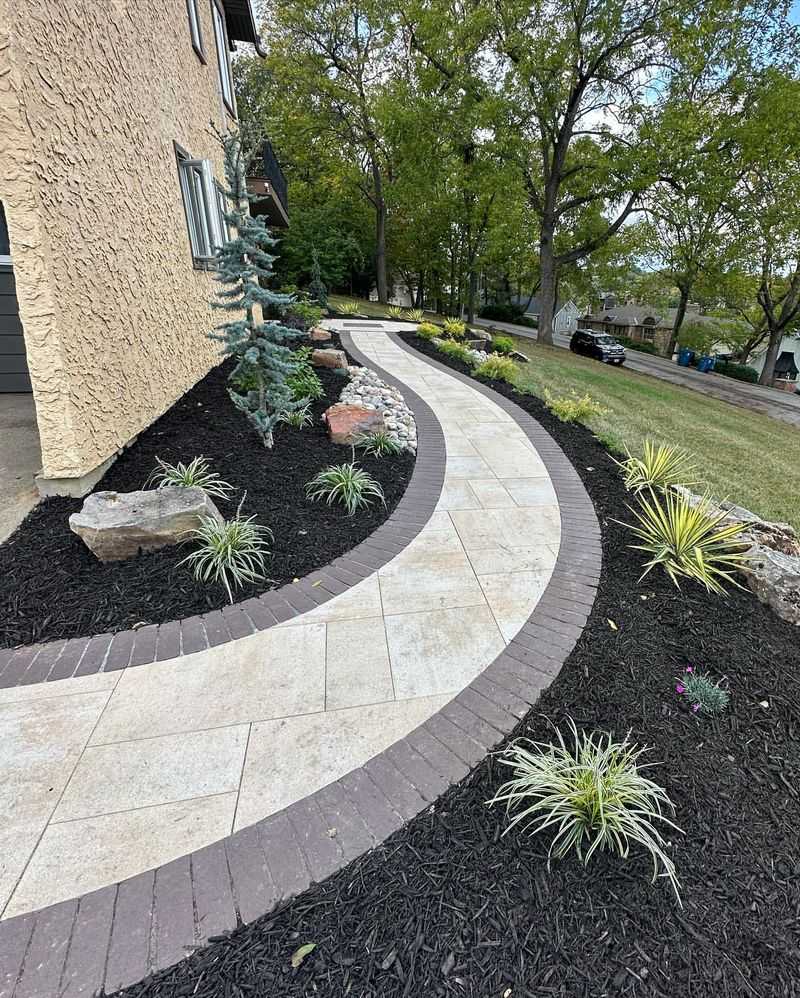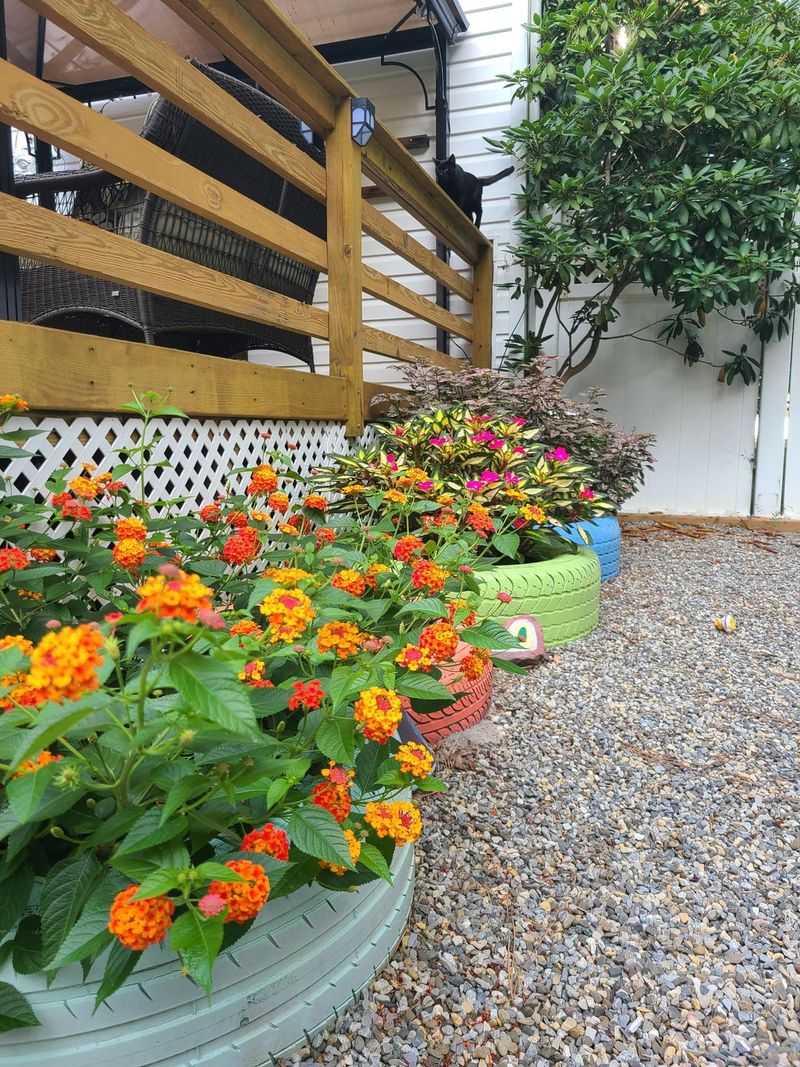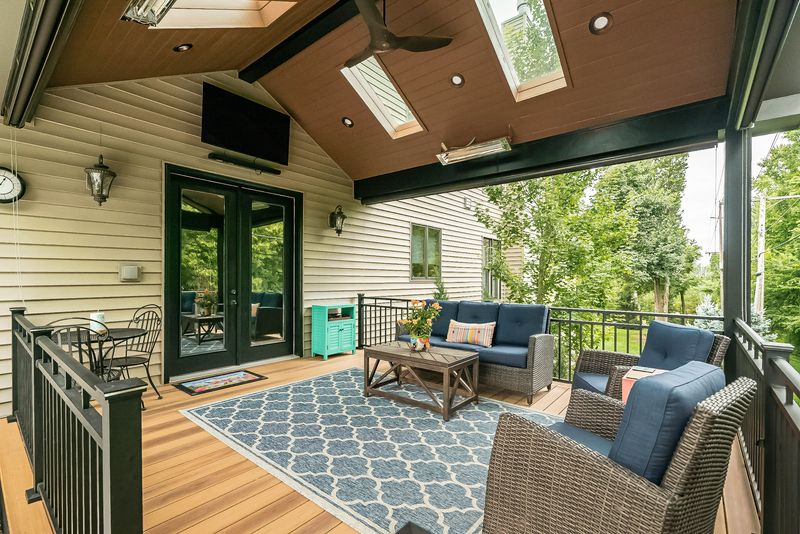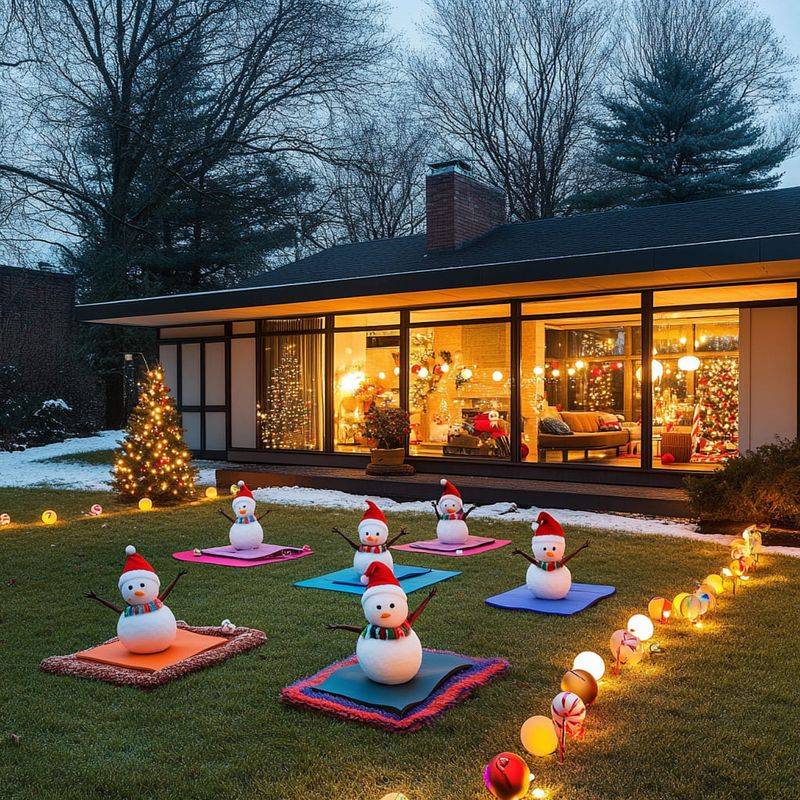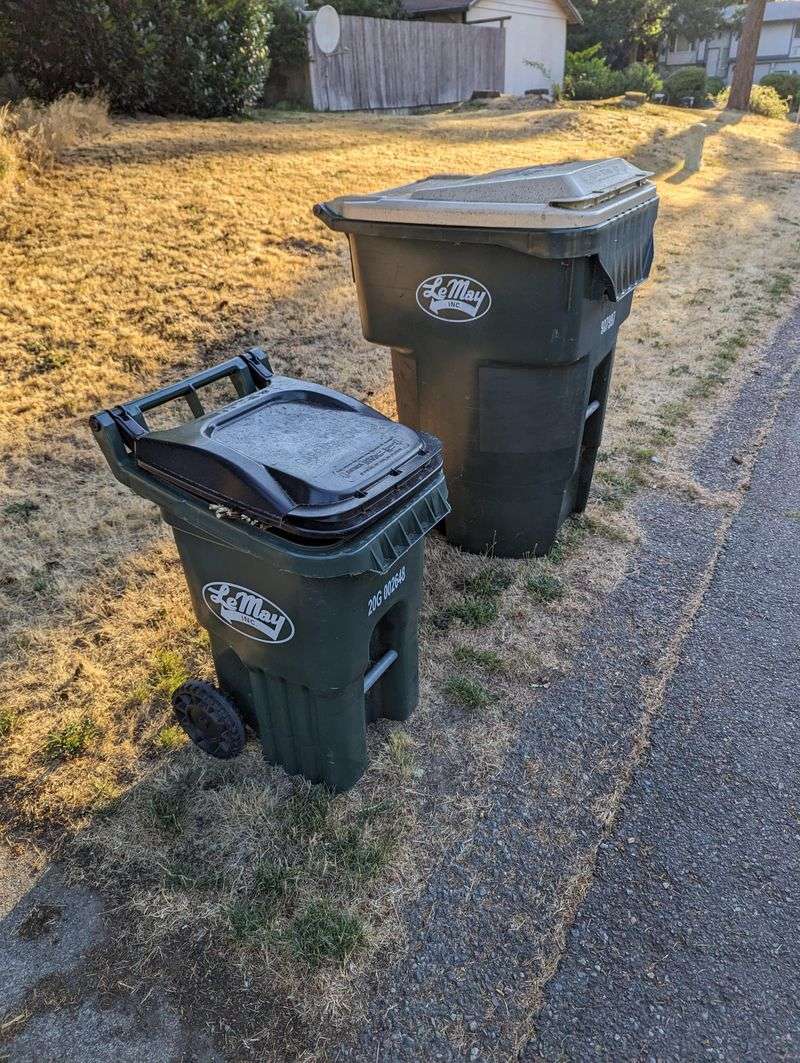Your front yard sets the tone before anyone even reaches your door—but some landscaping choices can work against that welcome. Overgrown shrubs, mismatched decor, or bare patches might be sending the wrong message without you even realizing.
Swapping clutter for clean lines and focusing on balance can make a huge difference. Try trimmed hedges, layered plantings, and pops of color near your entrance. Even simple updates like fresh mulch or painted planters elevate the space instantly.
With just a few thoughtful tweaks, your yard can feel polished and inviting. Think of it as curb appeal with character—making your home feel warm, stylish, and ready to impress at first glance.
1. Plastic Lawn Ornaments
Those colorful plastic flamingos and garden gnomes might seem cute at first, but they quickly fade, crack, and collect dirt. The cheap material stands out like a sore thumb against natural landscaping.
Natural stone sculptures or a single high-quality metal art piece provides a more sophisticated focal point. They weather beautifully and complement the organic elements in your yard.
My neighbor replaced her collection of plastic animals with one elegant birdbath, and the difference was immediate. The yard suddenly looked intentional rather than cluttered.
2. Overgrown Hedges
When hedges grow wild and untamed, they block natural light, create a forbidding appearance, and can make your home look abandoned. The irregular shapes draw attention to neglect rather than your home’s architecture.
Regular trimming keeps hedges at a reasonable height – typically below window level. Consider replacing massive hedges with lower-growing native shrubs that need less maintenance.
Walking past a house after the owners finally trimmed back their enormous hedges was like seeing the place for the first time – suddenly it had a face again!
3. Chain Link Fencing
Industrial-looking chain link creates an unwelcoming prison-yard vibe no matter how well-maintained it is. The metal material feels cold and utilitarian, making your yard look like a compound rather than a home.
Wooden picket fences, vinyl alternatives, or even a living fence of shrubs create boundaries with character. If budget is tight, soften existing chain link with flowering vines like clematis or jasmine.
During our neighborhood’s improvement project, replacing just three chain link fences with white pickets transformed the entire street’s feel from institutional to charming.
4. Neglected Mailboxes
Rusty, dented, or leaning mailboxes signal neglect to everyone passing by. Since they’re positioned right at the street, they’re often the first thing people notice about your property.
A fresh, properly installed mailbox makes a surprising difference. Choose one that complements your home’s style – traditional, modern, craftsman – and consider adding a small planting around its base.
Last spring I finally replaced our ancient, tilting mailbox that had embarrassed me for years. Three neighbors followed suit within weeks, proving how contagious good curb appeal can be!
5. Excessive Lawn Ornaments
A collection that starts with one cute garden statue often grows into a chaotic menagerie. The yard becomes visually overwhelming, with no clear focal point and a cluttered, disorganized appearance.
Select just one or two quality pieces that truly speak to you. Position them thoughtfully to create interest without overwhelming the space. Remember that negative space is as important as decorative elements.
Driving past houses where every square foot contains a different ornament reminds me of the design principle that sometimes less truly is more.
6. Concrete Jungles
Yards paved entirely with concrete create a harsh, institutional feel. These heat-trapping surfaces contribute to the urban heat island effect and prevent natural water absorption, causing runoff issues.
Break up large concrete areas with permeable pavers or gravel sections. Add container gardens or create cutouts for planting beds to soften the hardscape and allow for better drainage.
The difference between my cousin’s former all-concrete front yard and his new mixed-material approach is remarkable – temperatures on his porch dropped noticeably after removing just 30% of the concrete.
7. Artificial Grass
Fake grass often looks exactly that – fake. The uniform color and texture lack the natural variation of real grass, and many varieties develop a shiny, plastic appearance over time.
Consider drought-tolerant ground covers like clover, sedum, or ornamental grasses that require minimal watering. Native meadow plantings create habitat for pollinators while demanding far less maintenance than traditional lawns.
After seeing how beautiful my friend’s native plant yard became – full of butterflies and seasonal interest – I can’t understand why anyone would choose the static appearance of artificial turf.
8. Faded Plastic Planters
Inexpensive plastic pots quickly become brittle and discolored from sun exposure. Their lightweight nature means they topple easily in wind, creating a perpetually disheveled appearance.
Terracotta, concrete, or ceramic planters develop character over time rather than degrading. Group containers of varying heights but similar materials for a cohesive look that appears intentionally designed.
The simple act of replacing the mismatched plastic containers flanking my front door with substantial ceramic ones made the entrance feel instantly more welcoming and put-together.
9. Overly Complex Water Features
Elaborate fountains with multiple tiers, colored lights, and figurines often look out of place in average-sized front yards. They demand constant maintenance, with pumps that break and basins that grow algae or collect leaves.
Simple, scaled-appropriate water features like a small bubbling rock or shallow basin create the soothing sound of water without overwhelming the space. Choose natural materials that blend with the landscape.
A garden I admired for years featured just a simple stone basin with water gently flowing over the edge – proof that restraint often creates more impact than extravagance.
10. Dying Lawns
Brown, patchy grass creates an immediate impression of neglect, no matter how well-maintained the rest of your property might be. Fighting to maintain grass in unsuitable conditions wastes water and looks perpetually struggling.
Embrace alternatives suited to your climate. Xeriscaping in dry regions, shade-tolerant ground covers under trees, or defined mulch beds can replace areas where grass struggles to thrive.
The transformation on my street when one family replaced their perpetually dying lawn with a thoughtfully designed rock garden was remarkable – from eyesore to neighborhood showpiece.
11. Broken Concrete Paths
Cracked, uneven walkways create tripping hazards and collect weeds in every crevice. Their deteriorating condition becomes more noticeable with each passing season, making your entire property look neglected.
Replace damaged concrete with pavers, flagstone, or gravel paths that add character while improving safety. These materials allow for easier repairs when sections settle or become damaged.
When we finally addressed our crumbling front walk last fall, I was surprised how much the new pavers elevated the entire property’s appearance – it was like giving the house a fresh haircut.
12. Random Tire Planters
Painted tires repurposed as planters often look exactly like what they are – old tires with paint slapped on them. The industrial origin remains evident despite attempts to disguise it with bright colors.
Raised garden beds made from natural materials like stone, wood, or even galvanized metal stock tanks offer a more cohesive look. They provide the same functionality without the makeshift appearance.
Driving through neighborhoods, I can spot the tire planters from blocks away – not because they’re clever upcycling, but because they stand out so jarringly against their surroundings.
13. Mismatched Outdoor Furniture
A collection of random chairs, tables, and benches gathered over time creates a jumbled, unintentional look. When pieces don’t relate to each other in style, scale, or material, the result feels haphazard.
Choose furniture with a cohesive look, even if acquired over time. A fresh coat of paint in a single color can unify disparate pieces, or select items from the same material family – all wood, all metal, or all wicker.
The front porch that used to display a rainbow of mismatched furniture now features the same pieces painted a consistent navy blue – the transformation cost just one weekend and two cans of paint.
14. Excessive Holiday Decorations Left Up
Christmas lights in April, faded Halloween pumpkins in January, or patriotic bunting turning grimy in October – out-of-season decorations signal neglect and lack of attention to your property.
Enjoy seasonal decorating but commit to prompt removal. Create a calendar reminder for taking down holiday items, or limit displays to easily removable pieces rather than elaborate installations.
The house down the street with Christmas lights glowing in June became such a neighborhood talking point that I now religiously remove my own holiday decor within two weeks of any celebration.
15. Overflowing Trash Cans
Garbage and recycling bins left permanently visible from the street create an immediate negative impression. Their utilitarian appearance and occasional odors detract from even the most beautiful landscaping.
Create a simple enclosure using lattice, a short fence section, or strategic plantings to screen bins from view. Establish a routine of promptly returning containers to their designated area after collection.
The difference between our street on garbage day versus regular days highlights how much visible trash cans affect the overall appeal of otherwise lovely homes.

